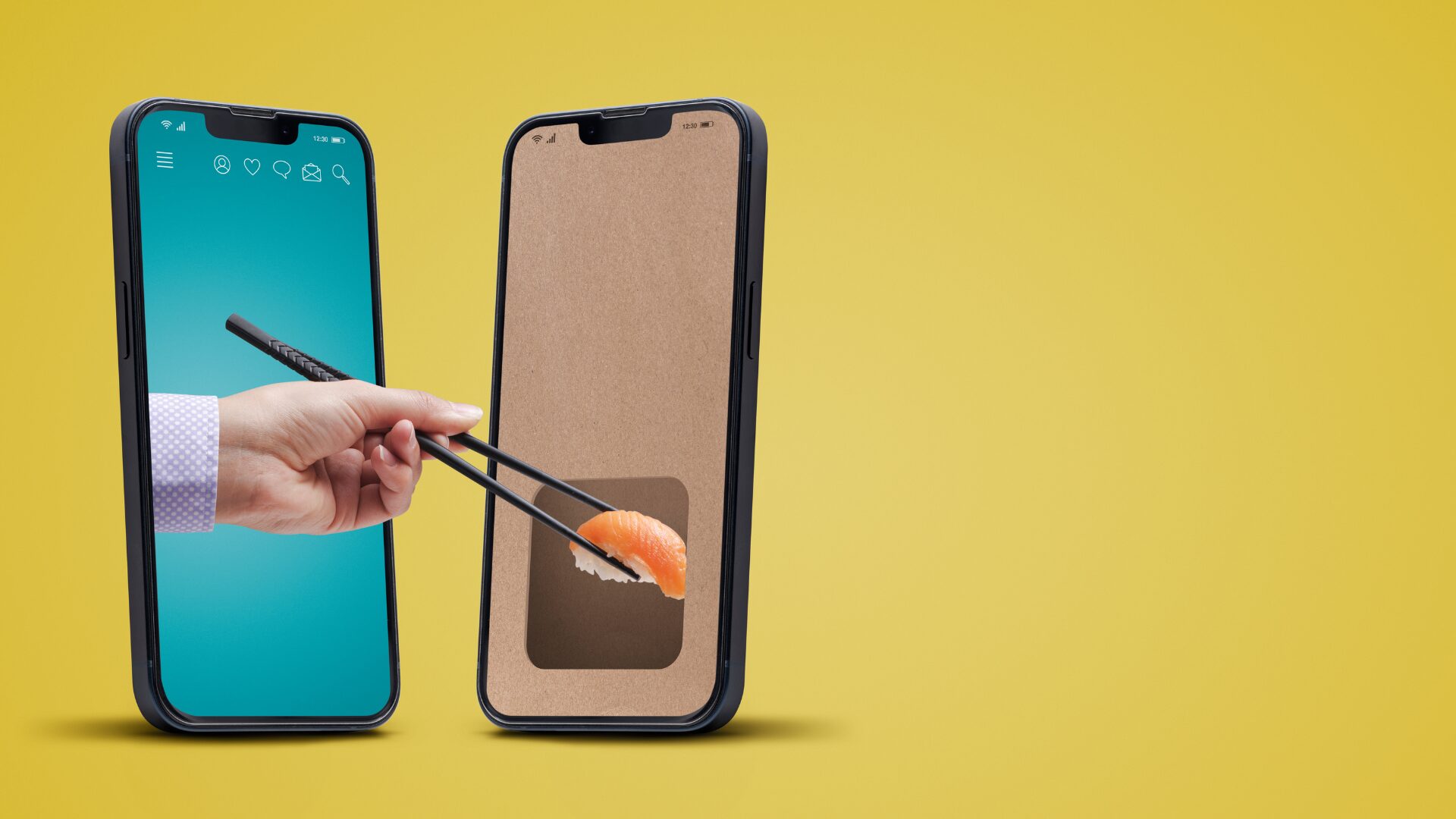Two words defined 2023: Authenticity and Rizz.
The first, authenticity, is Merriam-Webster’s annual word of the year. The second, rizz – short for ‘charisma,’ and having it – is via Oxford University Press, publisher of the Oxford English Dictionary.
The choices not only reflect global culture in a year when many brands spend millions in order to achieve some version of them; both choices speak to our (and our favorite brands’) penchants to speak plainly, represent something true, and ignite our desires to interact with that which brings value to our lives.
For foodbev brands, the message is clear: gaining new business and retaining longtime customers is incumbent upon much more than the product inside the box or bottle; the value proposition must be more fully realized than “convenient services rendered.”
Put another way, in the eyes of the consumer, authenticity is a privilege extolled by the brand, not a right granted by the product. And that privilege must be earned, communicated, and maintained.
Back in my day, we might have asked What’s the 411? Is it all that and a bag of chips? So mint.
Today, however, awash in AI-assisted listicles, deepfakes of celebrity culture, and the rise of the dupe as a viable alternative to the real thing, embodying authenticity and reppin’ the rizz isn’t as easy as many believe.
Is The Era of the No- No- Nos Over?
There’s been a significant swing of the cultural pendulum away from sugar-free, alcohol-free – what many consumers may regard as “fun-free” – products in CPG, restaurant, and retail. A little indulgence goes a long way, and mindful consumption – of not only products and brands, but of the food and beverages over the course of the holiday season – is for many a more realistic, more enjoyable, and more practical approach to living.
“Don’t choose to go on a diet right before the holidays,” said Andrea Delgado, a Mayo Clinic dietitian, in Medical Xpress, “Don’t beat yourself up. If you do overindulge, it’s OK to make a plan moving forward at the next party,” she added.
What she’s getting is summed up well by Melissa Dolan, an expert in CPG investing and brand management and director at Emil Capital Partners: intentional consumption versus hypervigilant avoidance. Dolan also spent several years in brand management at General Mills and Danone.
“The era of the no, no, nos (no artificial sweeteners, no artificial colors, no added sugar, etc.) is waning,” she told The Food Institute. “Consumers navigated a growing laundry list of ingredients to avoid in the last decade. Now, emerging brands are focused on joy and inherent goodness.”
Dolan says the data supports this blending of the consumer lifestyles.
“Beverages with 5-40 calories are growing at 14% versus overall category growth of 8%,” she added. “Real ingredients such as fruit and sugar are on-trend. Consumers want a little of the good stuff versus products devoid of sweeteners.”
Brands that state what they offer opposed to what they lack – even if it’s calories and sugar – are reaching viable markets in CPG, direct-to-consumer, and via TikTok Shop and social media. They’ve got rizz, and their value propositions communicate authenticity.
Flavor Isn’t Enough Anymore
Flavor fades, doesn’t it? Flavor is fleeting, ephemeral, often better imagined than realized at home and in restaurants. If food/bev brands could build long-term loyalty on flavor alone, they wouldn’t change their products every quarter. It’s the great dilemma many pizza companies face – most people love pizza. But most consumers grow bored of pepperoni and sausage, which is why Domino’s, for example, first stuffed its crust with cheese, and why it’s now selling pepperoni-loaded cheesy bread. Reconstitution sells because flavor isn’t enough.
“Authenticity is a key factor of having rizz,” said Michael Della Penna, chief strategy officer at InMarket and 30-year veteran of digital marketing.
“Particularly for younger consumers like Gen Z, to have rizz and to build long-term relationships with customers, your authenticity needs to shine through every piece of your brand’s identity from messaging to mobile ads to influencer partnerships.”
Della Penna said leveling rizz takes serious work in a saturated digital ad landscape.
“Think about what makes foodbev brands stand out…just like you would think about what differentiates a Hinge profile in a sea of competition. The answer – authenticity.”
It’s no secret that being real has long been a hallmark of reaching consumers, delivering on a brand proposition, and growing business. The increased stress on it these last few years, however, indicates a consumer culture exhausted by the endless barrage of products and services delivered to them daily via email, social media apps, television and streaming media, billboards, podcasts, and more – just because it makes sense doesn’t make it easier. As retail media networks will only grow in scope, visibility, and consumer-bending influence, it will be harder and harder to stand out in an overly saturated foodscape.
“In 2024, the increased demand for authenticity and transparency presents a unique opportunity for food/bev brands to create personalized, relevant ad experiences fueled by in-depth understanding of your target audience, including why they shop alongside when and where to best reach them,” Penna added, noting that as consumers seek deeper insights into what they’re actually consuming, it will be more critical for brands to craft stories that showcase who they are, not just what they offer from a can or box or bag; creativity is critical without jumping the shark of consumers’ collective disbelief.
“Get creative,” Della Penna advised, “and from there, you’ll be able to power brand experiences that not only create longer-lasting and more memorable customer relationships, you’ll see your brand’s attractiveness and rizz skyrocket.”
Your Rizz Isn’t for Everyone, And That’s OK
Haters gonna hate, especially when rizzlers succeed.
And that’s OK. In many ways, being authentic isn’t about the best product or service or value or lifestyle; it’s about being human, which is being vulnerable.
Vulnerability is the heartbeat of authenticity, the subtle brand drumbeat that brand advocates and consumers can hear. Without a heartbeat – without being occasionally vulnerable – it will be hard to resonate and grow the brand in a way that feels organic, fresh, and authentic.
“In 2024, I think you’re going to see more “real” and owned content for a specific audience. Where brands have built a huge groundswell is focusing on the 1% of early adopters and creating with them in mind,” said Miles Marmo, co-founder of Agency Squid, a marketing agency for CPG companies.
“Not being a brand for everyone – and being vulnerable in the process – has allowed for truer connection to be made with these brands and is becoming more expected,” Marmo added, noting that, “We all love content. And we truly don’t mind advertising, as long as it’s entertaining.”
Brands that can do so, be vulnerable, and show a little rizz have a chance at earning an authentic reputation in the eyes of today’s savvy consumers.
Who knows? Perhaps next year, going delulu will also be part of the solulu, as recently noted in The Wall Street Journal. You never know how the language influences the market.
It was actor Tom Holland who really thrust rizz into the public realm during an interview with Buzzfeed in June. “I have no rizz whatsoever,” he joked, “I have limited rizz.” But it was lexicographer Casper Grathwohl, the president of Oxford Languages (dictionary division at Oxford), who really summarized Holland’s observation in a playful – and ultimately, benevolent – way.
“I hate to be a linguistic watchdog, but [Holland] should know well that limited rizz is still rizz,” he said.
And it’s that limited rizz that brands can deliberately achieve for increased authenticity, clicks, shares, sales – whatever drives your value proposition forward.
And that’s pretty mint, if you ask me.












